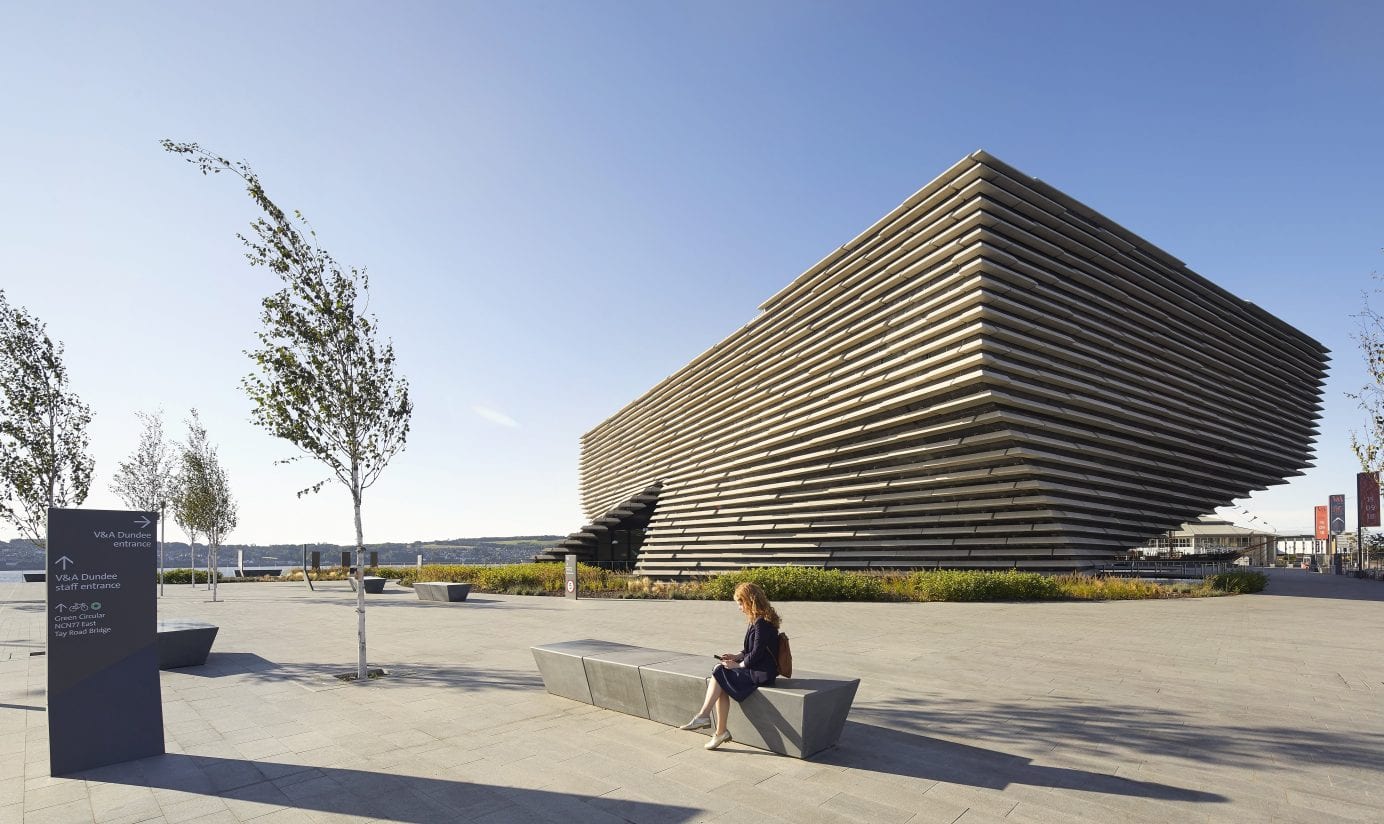V&A Dundee by Kengo Kuma
V & A Dundee, Scotland’s first design museum is the first V&A museum in the world outside London that is an international center for design, a place of inspiration, discovery, and learning.
“Museums should be part of the community and it should bring people together. V & A Dundee, was built on a very distinct location, between land and sea and the design had to reflect this. That brought us to the shape and texture of the exteriors, mimicking a sea cliff, with natural material used in its façade. The interior space is also designed to make people at ease.”
Visitors to V&A Dundee experience the remarkable story of design past, present, and future, and the vital contribution design makes to all our lives. Designed by Japanese architect Kengo Kuma, V&A Dundee stands at the center of the £1 billion transformations of the Dundee waterfront, once part of the city’s docklands. With its complex geometry, inspired by the dramatic cliffs along the east coast of Scotland, it stretches out into the River Tay – a new landmark reconnecting the city with its historic waterfront, and a major new cultural development for Scotland and the UK.
The new museum features permanent galleries of Scottish design, as well as an ambitious international programme of changing exhibitions showcasing the very best of design from around the world, new design commissions, fast-changing installations by emerging designers and creative projects developed through our learning programme for all our audiences.
At the heart of V&A Dundee, the Scottish Design Galleries tell the story of Scotland’s exceptional and international design heritage.
Background
An international architectural competition to deliver a new building for V&A Dundee was announced in January 2010. The challenge to architects was to propose an inspirational home for Scotland’s first design museum – a building set on the waterfront that would reconnect Dundee to the River Tay and to its maritime history. From 120 original design concepts submitted, six were shortlisted and put on display in an exhibition at Abertay University viewed by more than 15,000 members of the public. 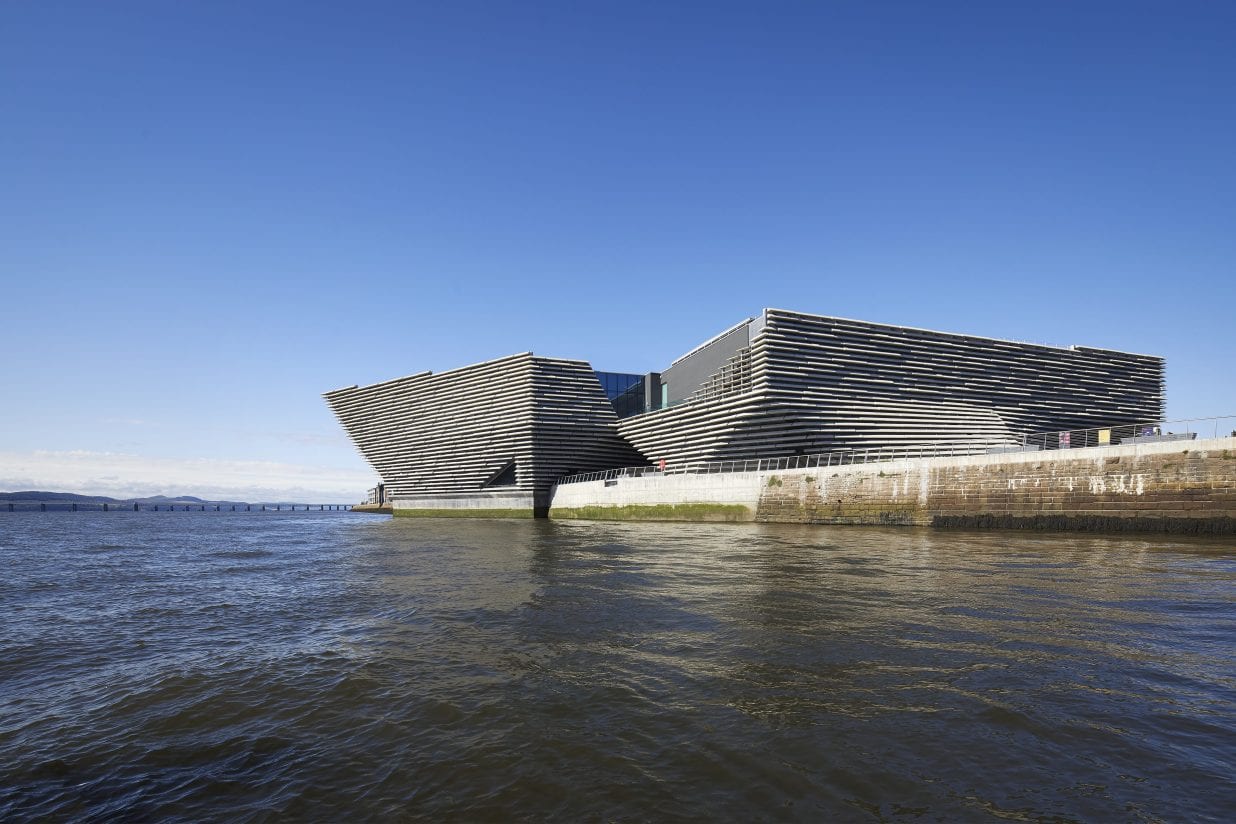
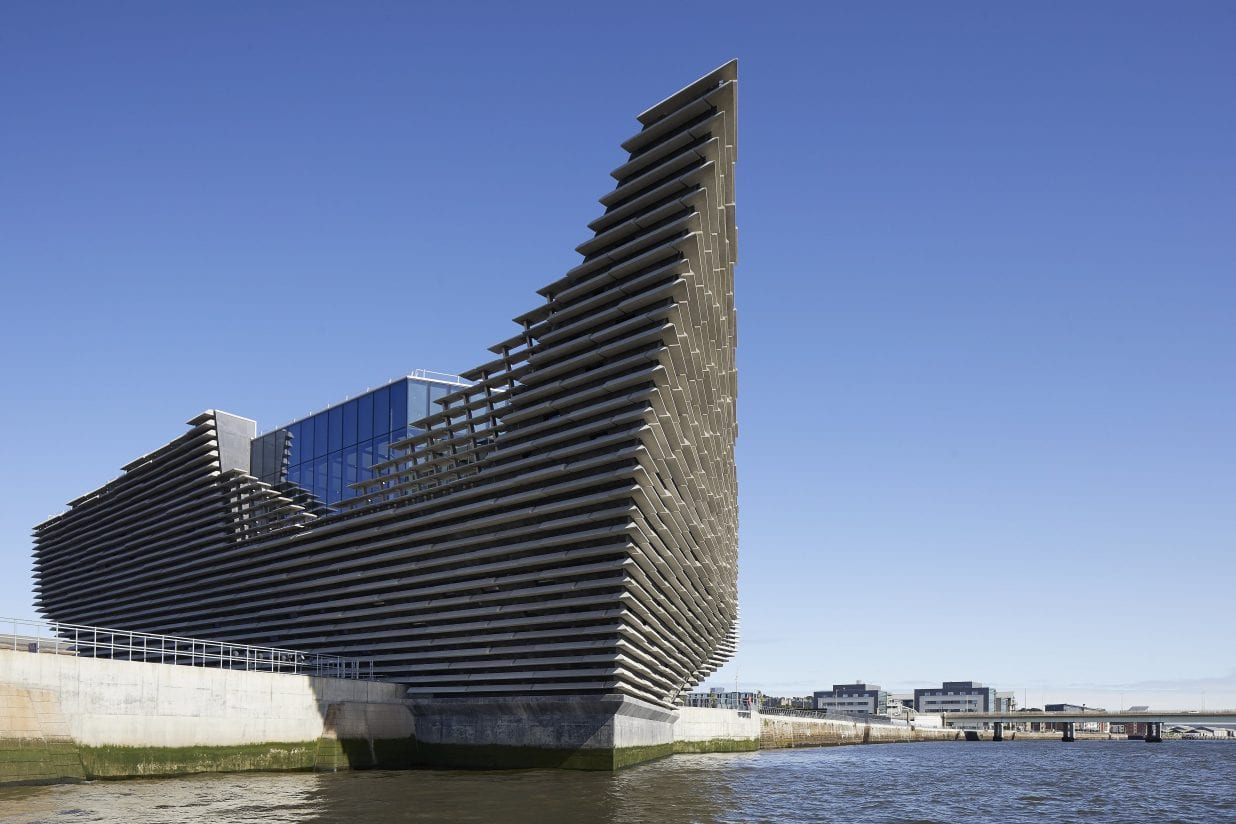
In November 2010, the Japanese architectural practice Kengo Kuma & Associates was unanimously named the winner of the competition.
Setting
Dundee sits on the north shore of the Firth of Tay and has a long history as the key entry point to Scotland for shipping from northern Europe. Today, V&A Dundee is the jewel in the crown of a £1 billion transformation of Dundee City Waterfront, which stretches 8 km alongside the River Tay and its estuary over an area of 240 hectares, in a 30-year development that began in 2001. 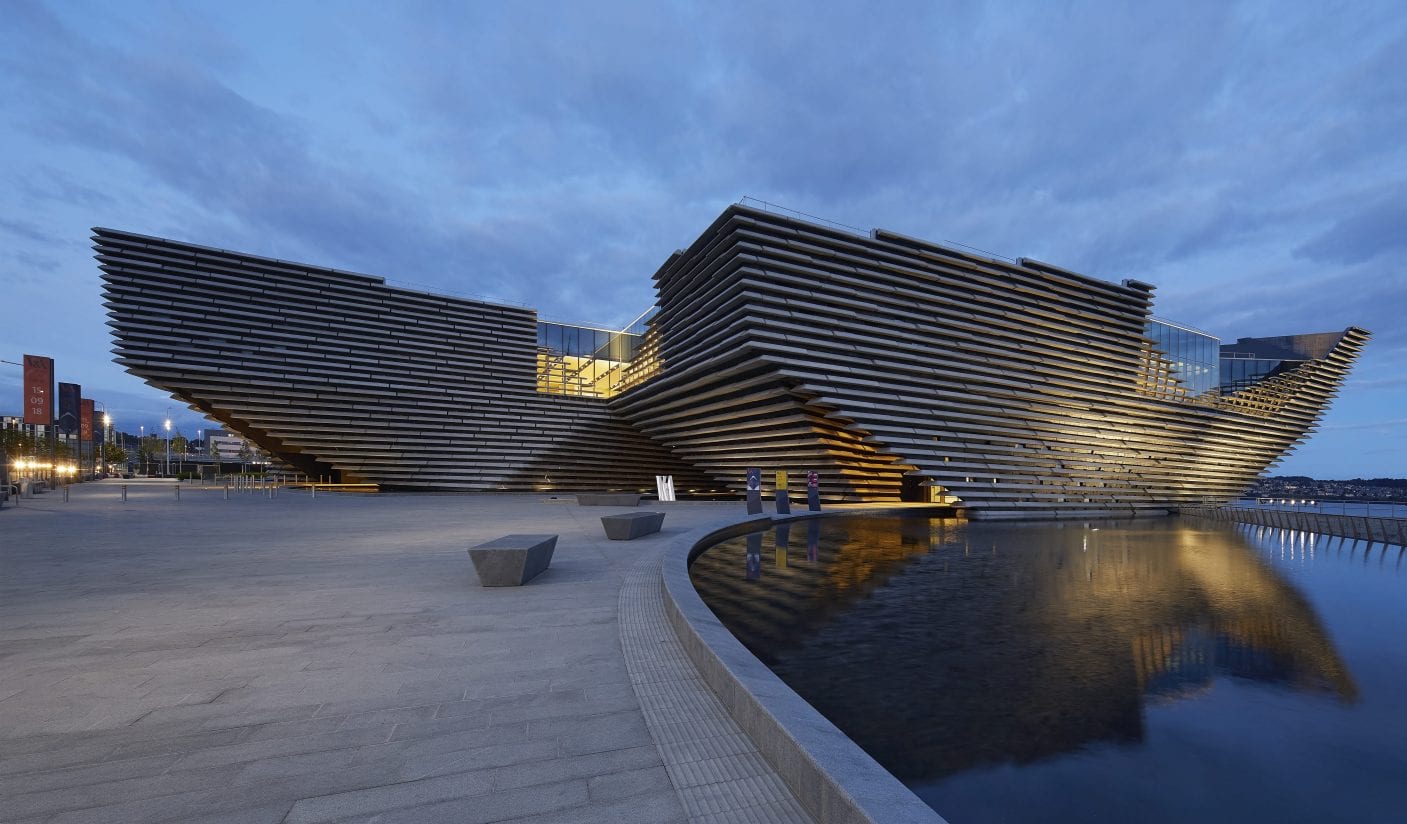
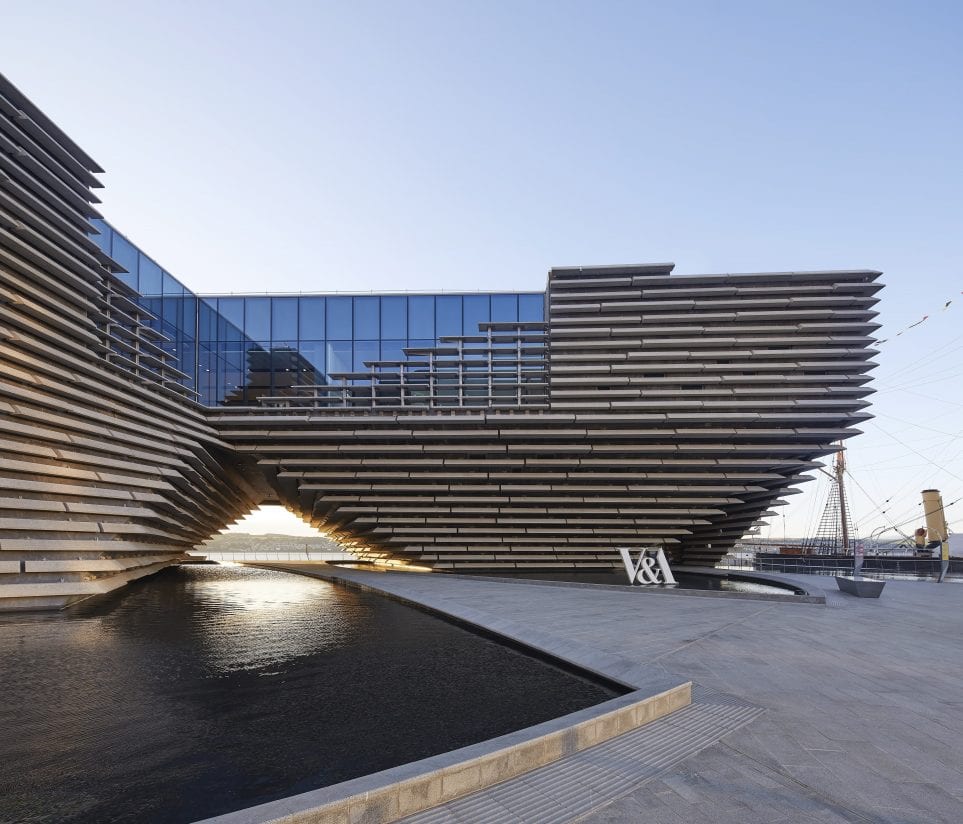
The building is positioned at the heart of what was once Dundee’s bustling maritime infrastructure, on the site of the demolished Earl Grey Dock. Its striking form reconnects the heart of Dundee to the Tay, echoing the time when shipbuilding and the trade-in textiles were its economic lifeblood.
Form
The form of the museum is inspired by the cliffs on Scotland’s north-eastern coastline, with the cladding – dramatic lines of pre-cast concrete that run horizontally around the curving concrete walls – creating patterns of shadows which change with the weather and the time of day.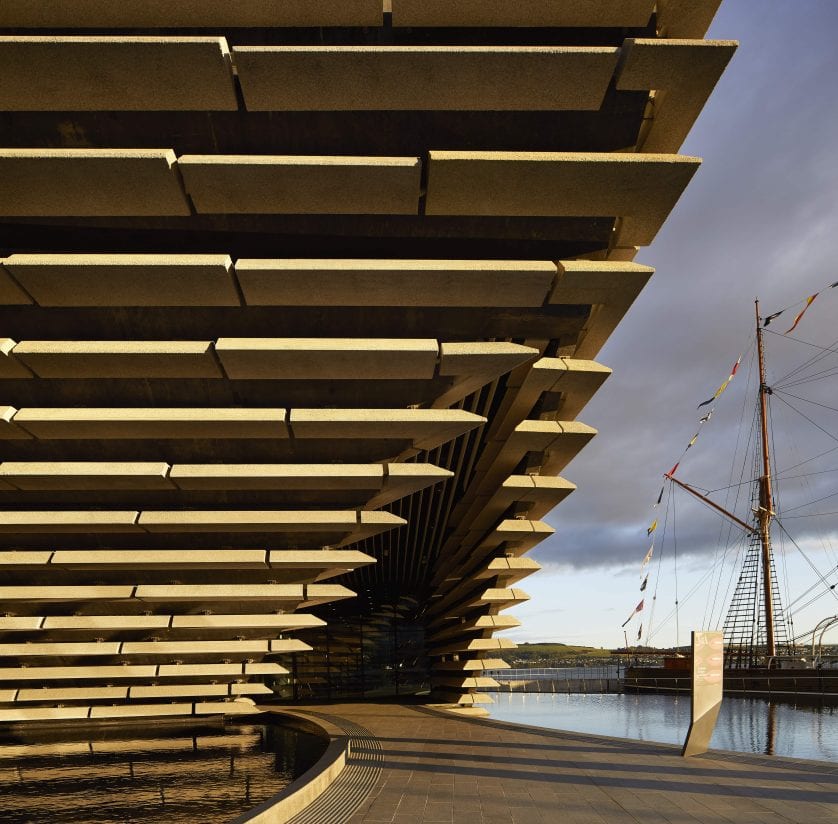
V&A Dundee’s appearance is of two inverted pyramids which are separate at the ground floor, and then twist to connect at the upper galleries floor. This creates an open archway through the center of the museum, reconnecting the city with the river, framing the view of the River Tay, and referencing the commemorative Royal Arch which was built nearby to welcome Queen Victoria and Prince Albert to the city in 1844. The Royal Arch was demolished when the city’s docks were in-filled to prepare for the construction of the Tay Road Bridge, which was completed in 1966.
The brief for V&A Dundee challenged architects to reconnect the city center with the river, which Kengo Kuma has done through water pools around the museum and by building the museum out into the River Tay. A ‘prow’ leans over the water and recalls the shipbuilding heritage of the city. 
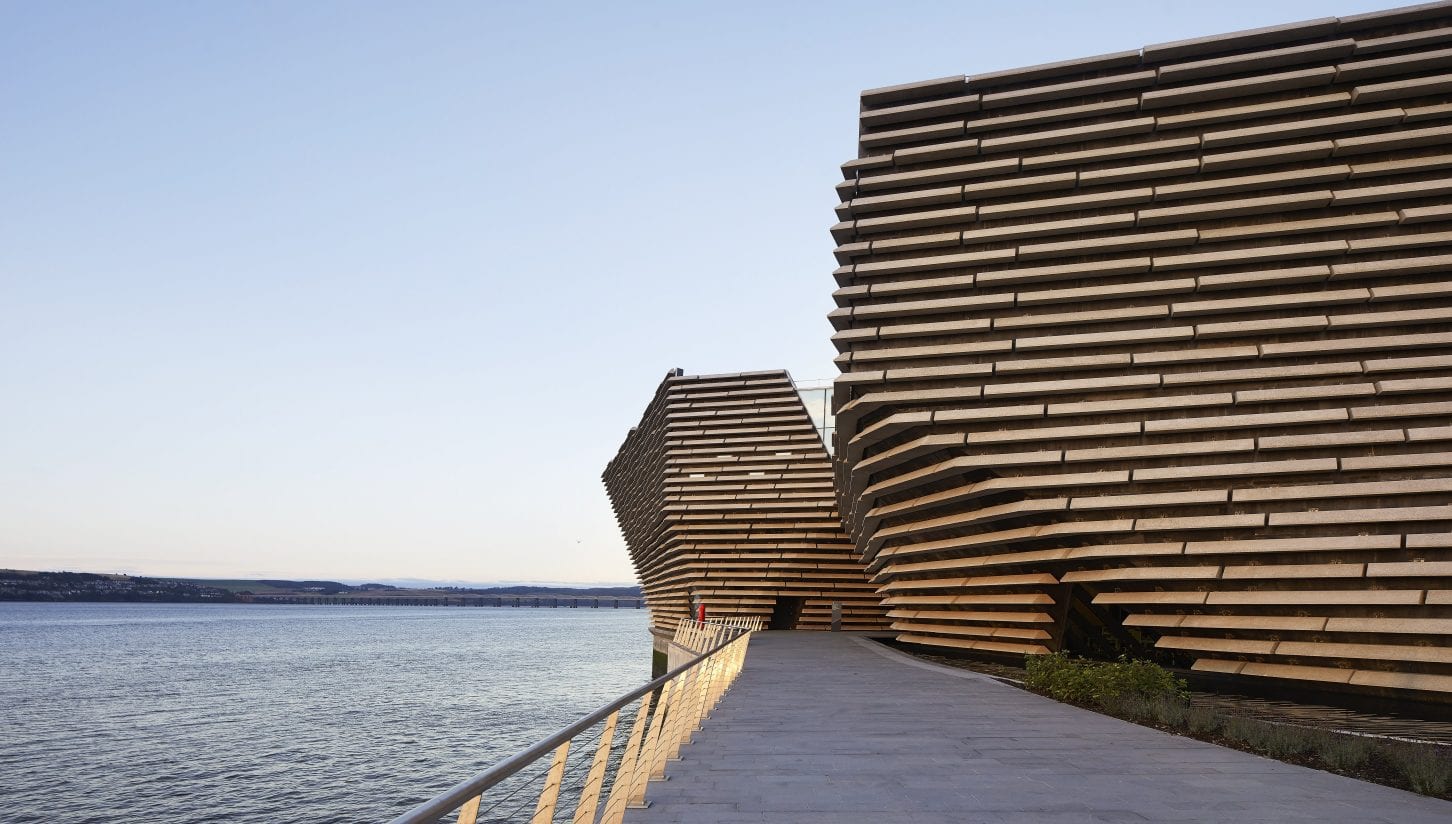
Structure
Kengo Kuma’s ambitious design demanded much of both engineers and constructors. It is a unique and complex structure with exterior walls which twist both horizontally and vertically, creating shapes like waves or the hull of a ship. Engineering firm Arup, which had been involved in the project since the competition stage, worked closely with the architects, BAM Construct UK and project managers Turner & Townsend to transform Kengo Kuma’s vision into reality. 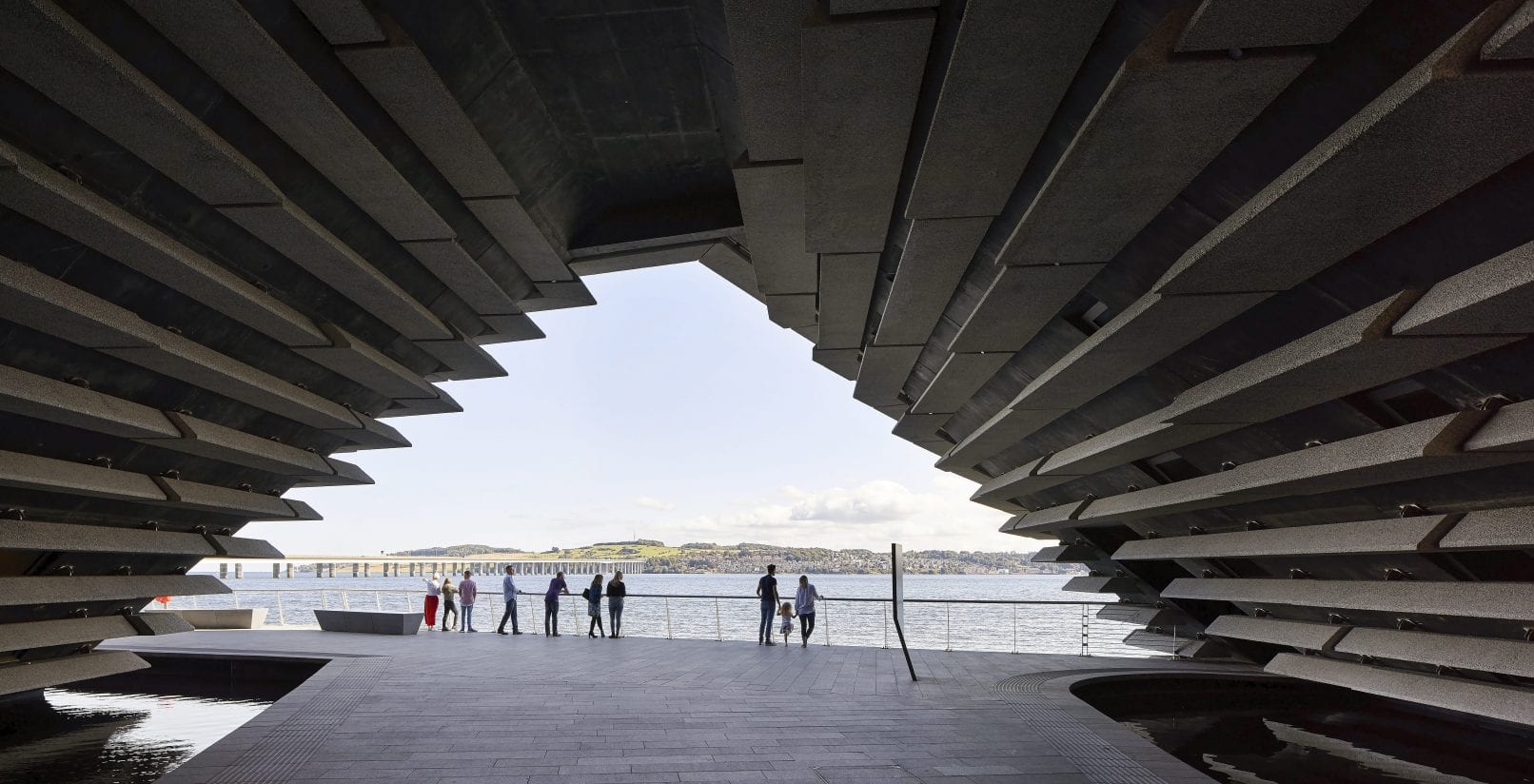

The original plans devised by the engineers included walls up to 60cm thick with huge pieces of the steel-embedded inside. By experimenting with the shape of the building using 3D models and analysis tools, the team cut the thickness of the walls by half and replaced the steel skeleton inside with much thinner reinforced bars.
The building functions in a similar way to a shell, in that it is a continuous and interconnected structure. The roof, walls, and flooring all work together to make the building stable. While the twists and folds of the walls might have been seen as presenting a problem, the engineers considered how these complexities could help strengthen the building, in the same way, origami relies on paper becoming more rigid when folded.
The finished structure remains true to the extraordinary design that won the competition, with the largest overhang seeing the roof extend an impressive 19.8 metres beyond the footprint of the museum.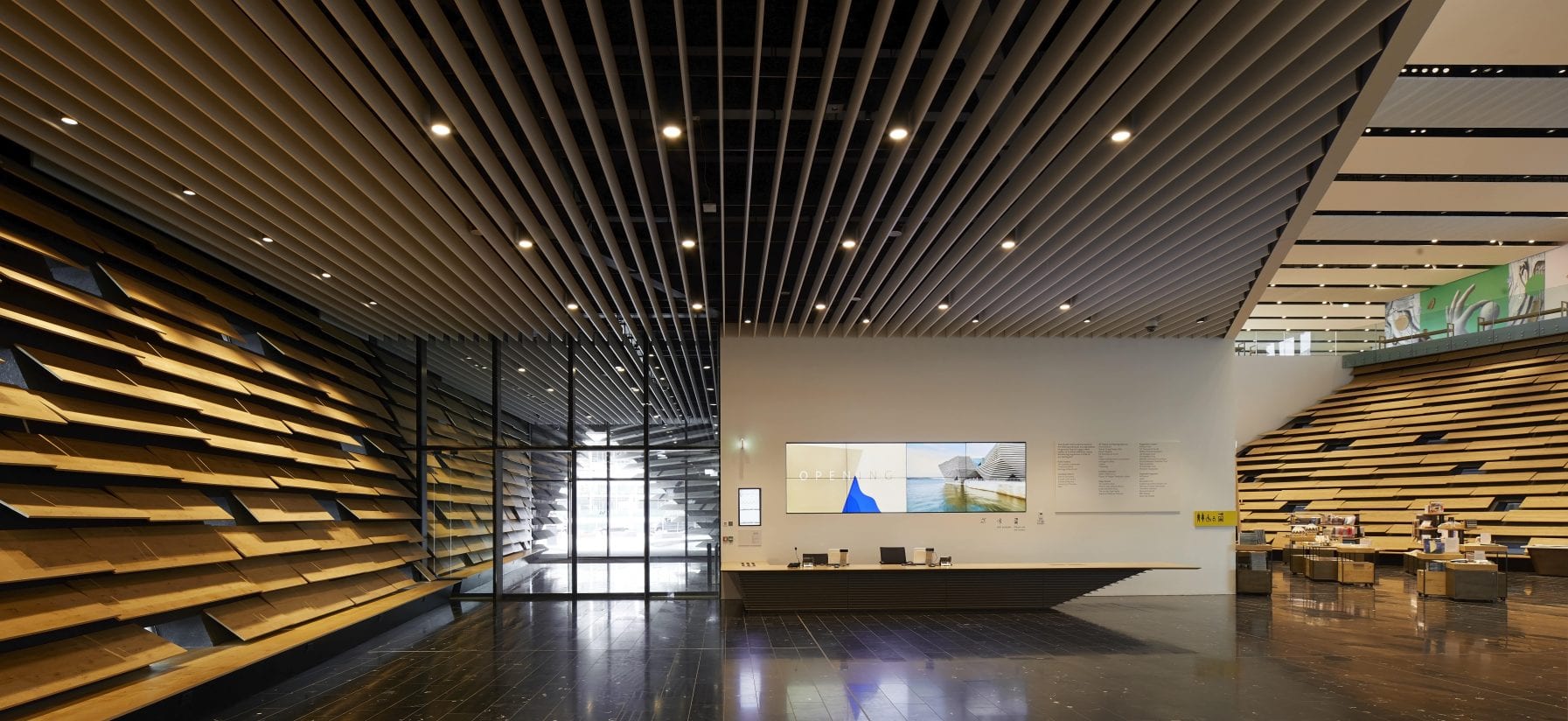
The building consists of two separate parts joined at the upper floor, where huge steel beams connect the exterior walls to two cores, providing support. The largest tension in a single beam is the equivalent of supporting around 40 double-decker buses.
While the lower floor is split in two, separating the public areas from object delivery, preparation and staff quarters, the upper second floor provides very large and uninterrupted gallery spaces. The separation of the structure at the lower levels allows for an outside walkway to pass through the middle of the building, an archway joining the river to the city. 
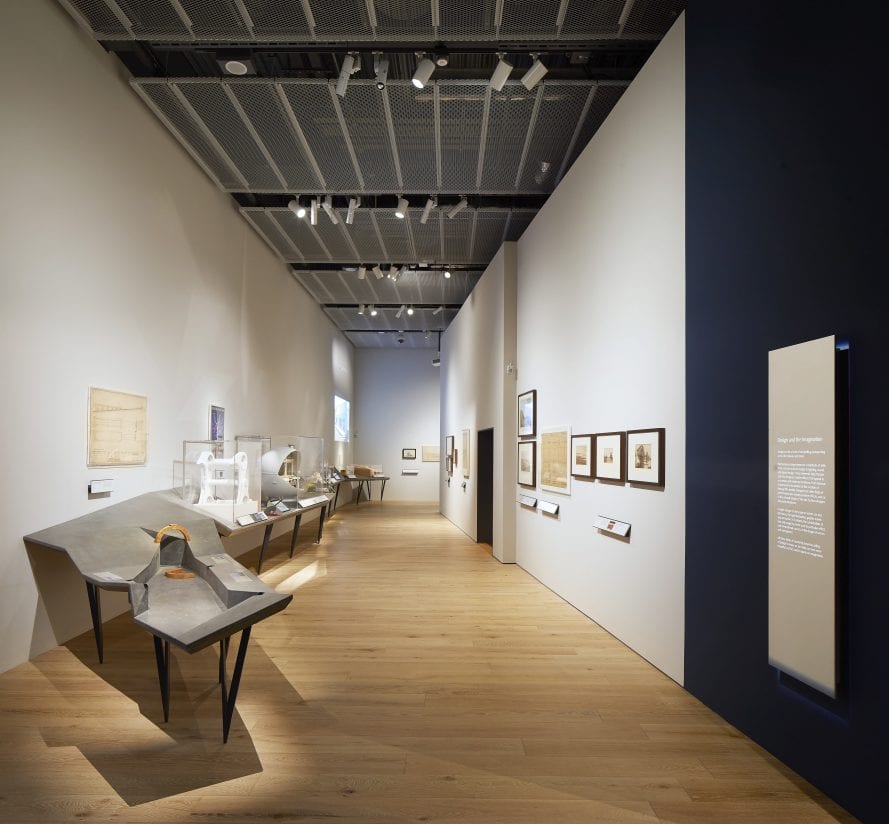
Spaces
V&A Dundee has a floor area of 8,445 square metres and includes a main hall, learning centre, auditorium, exhibition galleries and the permanent Scottish Design Galleries. At the ground floor level, it is arranged as two separate buildings. These join together on the upper second floor. 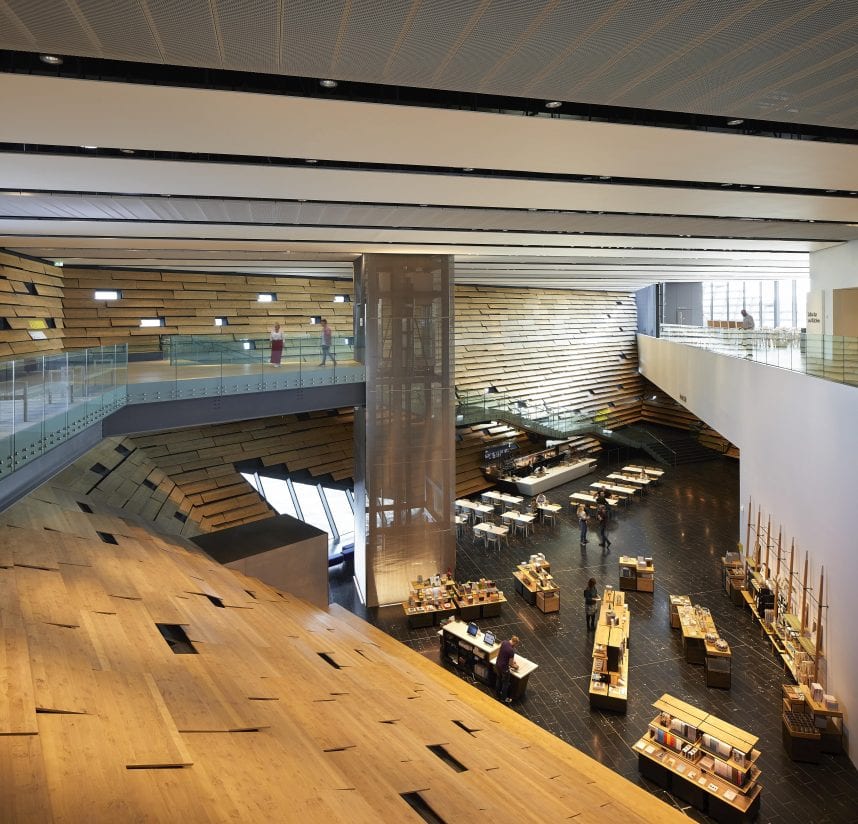
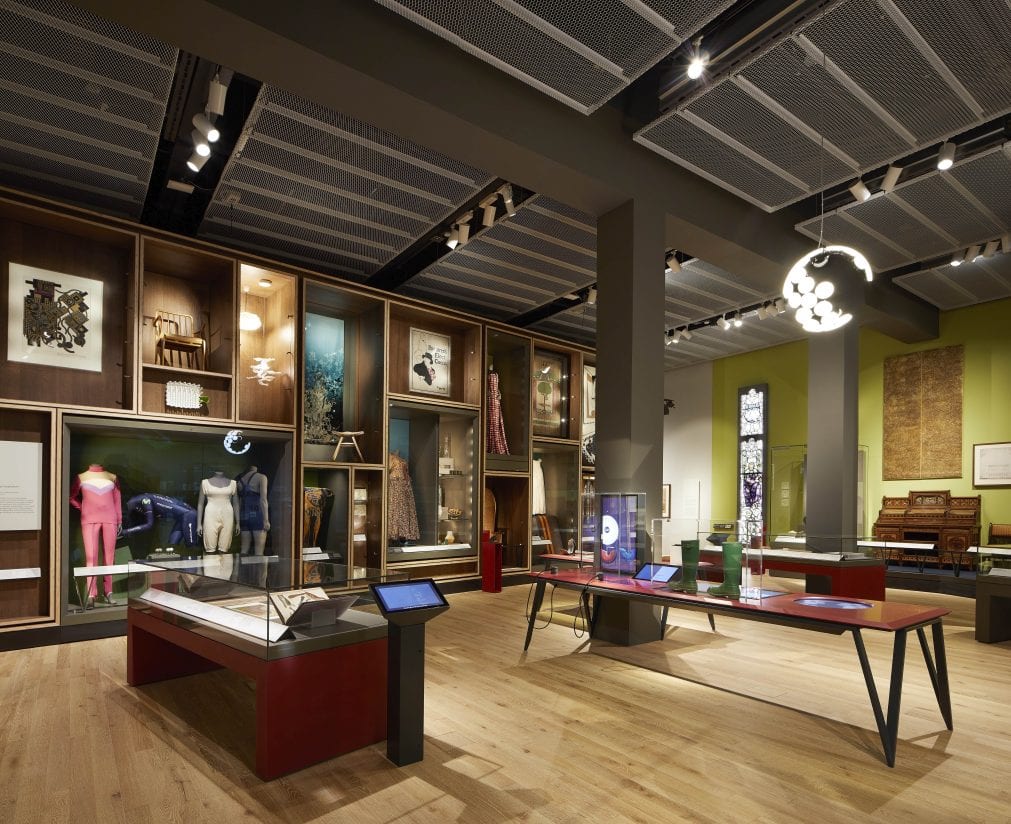
Visitors enter V&A Dundee through a large and beautiful main hall, a light-filled space intended by the architect to be welcoming and accessible, a vibrant place to socialise with a café, shop and other visitor facilities. The stepped interior walls are lined with hanging oak-veneered panels, pierced throughout by slot windows which create a dynamic, warm and playful light, as well as views out to the river.
The floor of the main hall and staircase is set with Carlow Irish Blue limestone, which includes visible fossils of sea creatures and plants, millions of years old. The dark stone with fossil detail was chosen to continue the connection to sea and nature throughout the building. A glass lift offers dramatic views as visitors rise up to the upper second floor.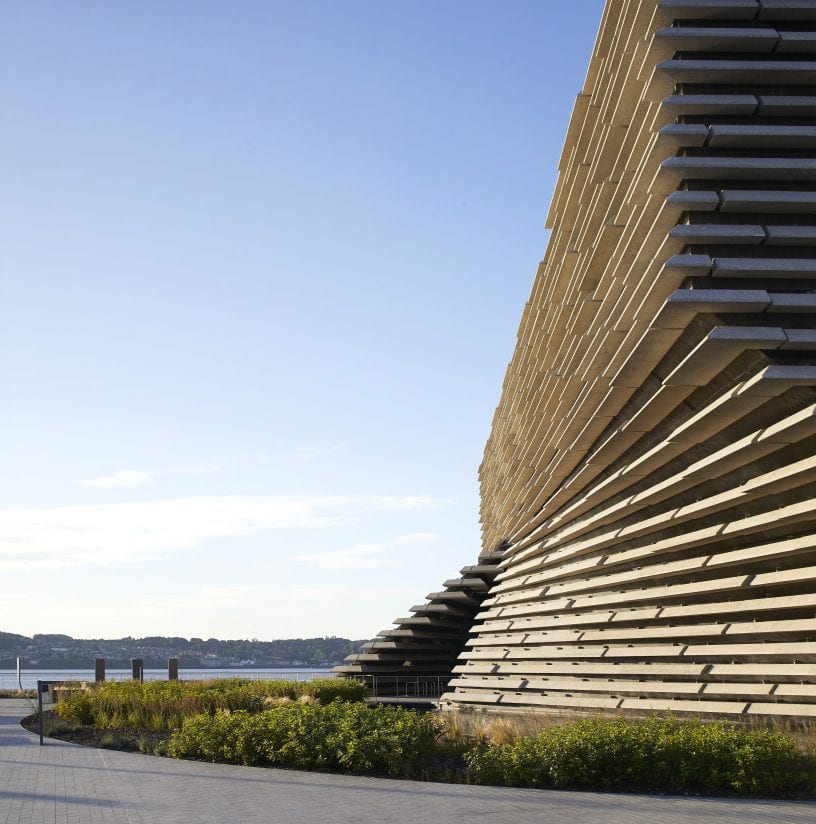
The white concrete used in the café, restaurant and on the shop’s cash desk pays homage to the River Tay’s endangered freshwater pearl mussel. The concrete has been mixed with mussel shells, a sustainably sourced by-product of the local UK food industry and local shores, then cast in bespoke forms and polished to reveal their whites, blacks, greys and blues.
A mezzanine first floor includes a picnic room for schools to book during the week and freely available for families to use at the weekend, as well as a Changing Places facility.
The upper second floor has views across the main hall, through the restaurant and out to the River Tay, with visitors welcomed into an open foyer connecting the Michelin Design Gallery, the Thomson Learning Centre and the entrances to both the exhibition galleries and the permanent Scottish Design Galleries. The floors on the upper level and within the galleries are laid with European oak, and bamboo is used for the floor of the restaurant and floor and walls of the picnic room. 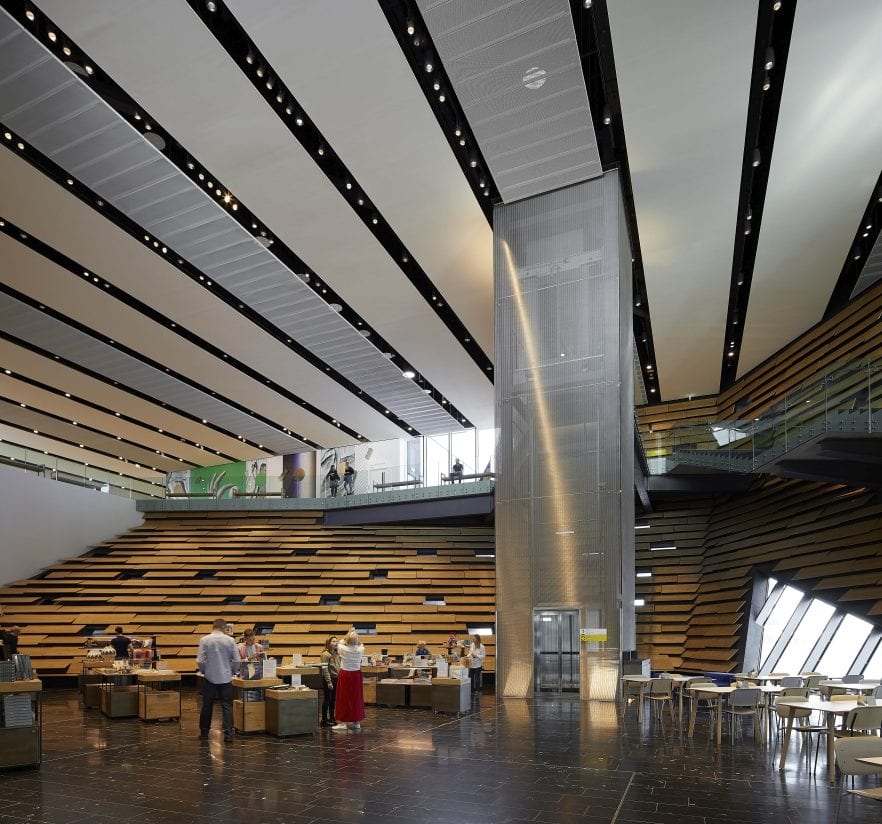

V&A Dundee has the largest museum-standard temporary exhibition space in Scotland, at 1,100 square metres, in addition to the Scottish Design Galleries at 550 square metres. The new museum enables V&A’s most ambitious exhibitions to be shared more widely across the UK
The museum will also include: dynamic learning spaces to accommodate visitors of all ages and backgrounds to learn from and participate in design creativity; a design residency studio where designers will share work-in-progress with visitors; a multi-purpose auditorium for conferences, design jams and community events, and a restaurant with spectacular views from its open terrace over RRS Discovery and the River Tay. 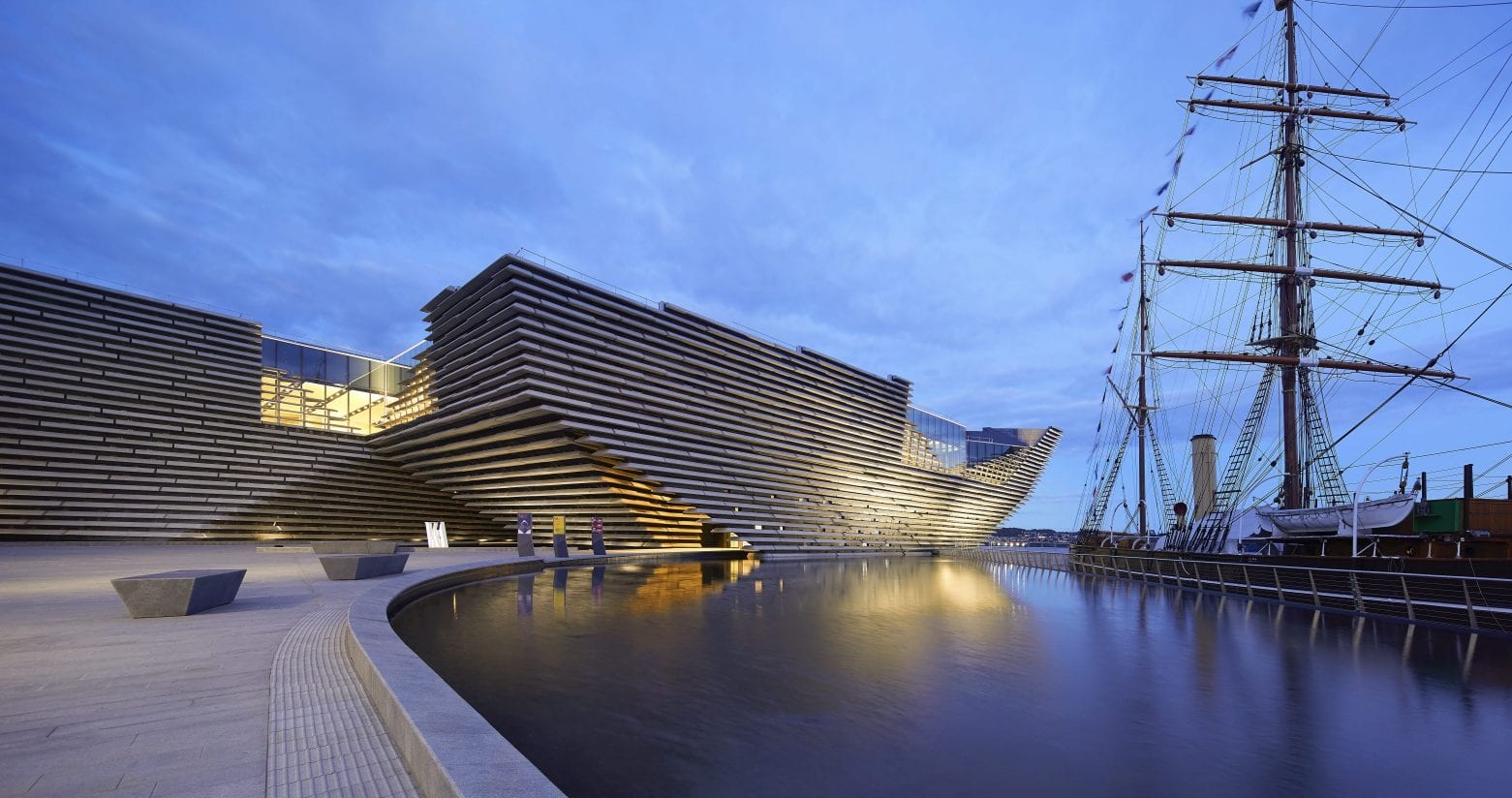
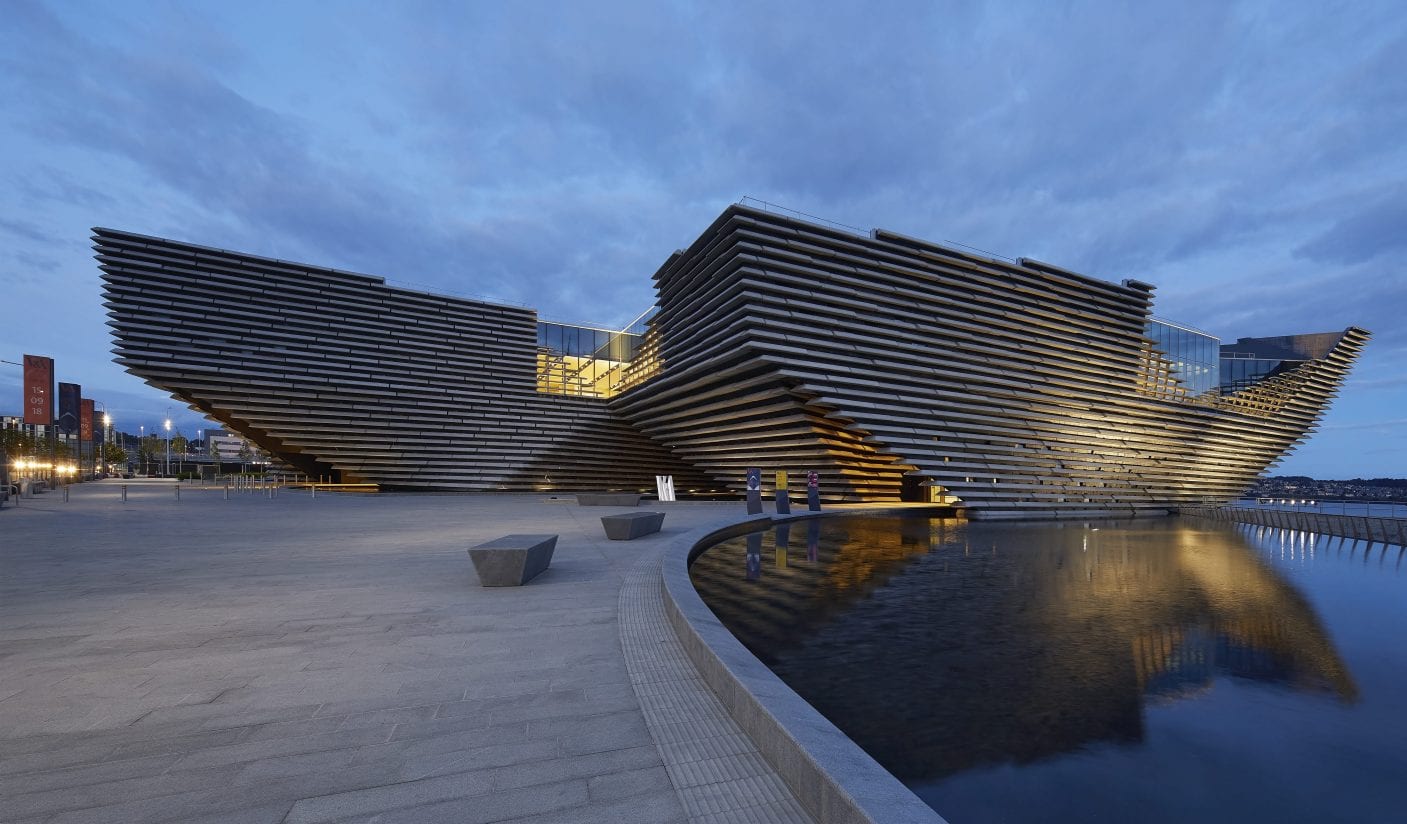
At the opening of the Museum, Director of V&A Dundee, Philip Long, “V&A Dundee brings something new to Scotland. It is the country’s first museum dedicated to design, which visitors will be able to experience and get involved with in very many ways.”
V&A Dundee has been established in close partnership with the Victoria and Albert Museum in London, drawing on its collections, curatorial expertise, and exhibitions. It is run independently with its own Director and, as well as bringing V&A exhibitions to Scotland, it will develop its own exhibitions.
V&A Dundee is being developed with support from the Scottish Government, Heritage Lottery Fund, Dundee City Council, the UK Government, Creative Scotland, Scottish Enterprise, University of Dundee, Abertay University and many trusts, companies and private donors.
Site area (approx.): 11,600 square metres
Total floor area: 8,445 square metres
Budget: £80.11 million
Client: Dundee City Council
Project Manager: Turner & Townsend
Main Contractor: BAM Construct UK
Lead Architect: Kengo Kuma & Associates
Structural/Maritime and Civil Engineer: Arup Mechanical,
Electrical, Fire and Acoustic Engineer: Arup
Façade Engineering: Arup
Lighting: Arup
Landscape Architect: Optimised Environments (OPEN)

